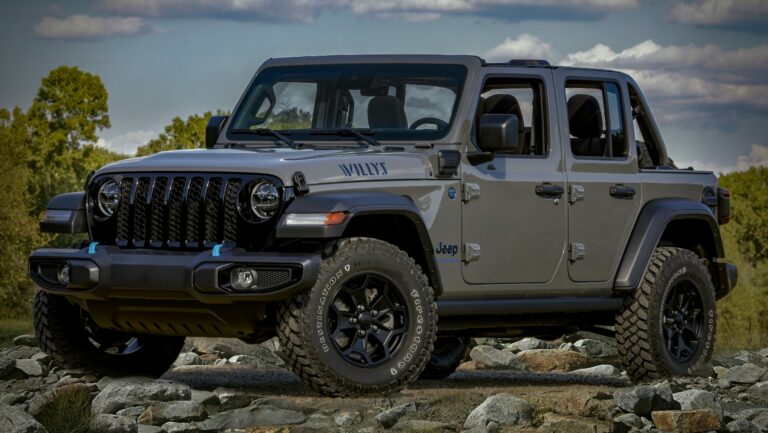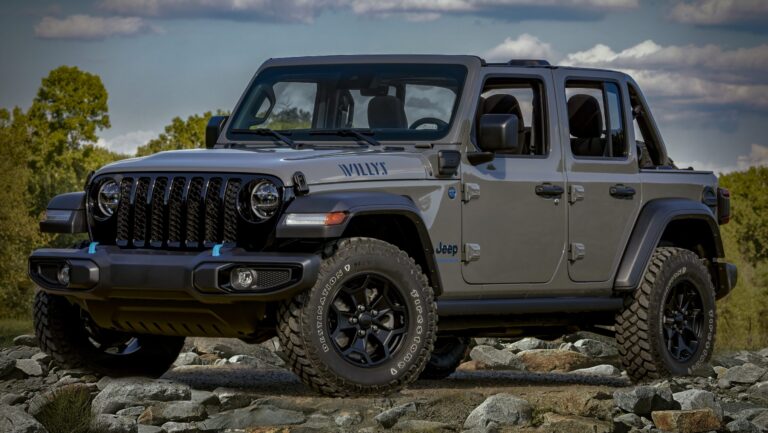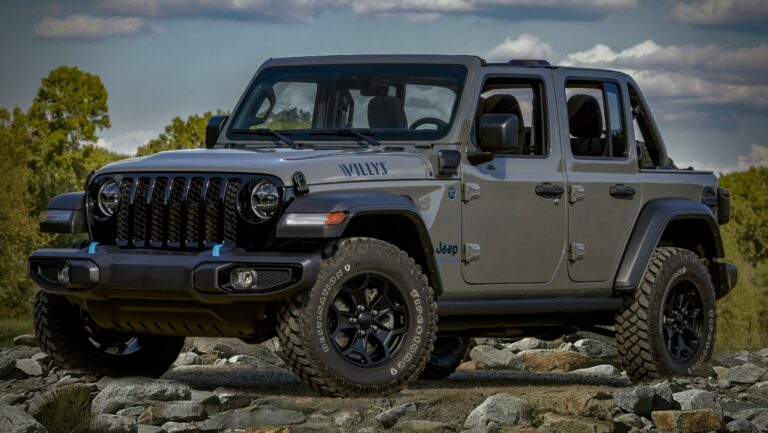The Enduring Icon: Unpacking the 1991 Jeep Cherokee (XJ)
The Enduring Icon: Unpacking the 1991 Jeep Cherokee (XJ) jeeps.truckstrend.com
In the vast landscape of automotive history, few vehicles command the enduring respect and fervent loyalty of the Jeep Cherokee XJ. And among its storied lineage, the 1991 model year holds a particularly significant place, representing the pinnacle of its initial design and the embodiment of its rugged, versatile spirit before later refinements and ultimate discontinuation. More than just a utility vehicle, the ’91 Cherokee is a cultural touchstone, a testament to practical engineering, and a highly sought-after classic for enthusiasts, off-road adventurers, and daily drivers alike. This comprehensive guide delves deep into what makes the 1991 Jeep Cherokee not just a car, but an institution.
A Legacy Forged: Historical Context and Design Philosophy
The Enduring Icon: Unpacking the 1991 Jeep Cherokee (XJ)
The Jeep Cherokee (XJ) first burst onto the scene in 1984, ushering in a revolutionary design that redefined the SUV segment. Unlike its truck-based predecessors, the XJ utilized a unibody construction, a bold move that blended the strength of a traditional frame with the lighter weight and improved handling of a passenger car. This innovative approach made it smaller, lighter, and more agile than traditional SUVs, yet it retained the legendary Jeep capability.
By 1991, the XJ was a mature and refined product, having undergone several minor updates since its debut. Its boxy, utilitarian aesthetic, penned by the legendary AMC design team, was both timeless and practical. Every line served a purpose, contributing to its compact footprint and surprising interior volume. The ’91 model represented a sweet spot: it retained the robust, no-frills character that made it famous, coupled with the most desirable engine option and a reputation for reliability that cemented its status as a legend. It was designed to be a vehicle equally at home navigating urban jungles, hauling families, or conquering the most challenging off-road trails.
The Heart of the Beast: Powertrain Options and Performance
The primary reason for the 1991 Cherokee’s legendary status often boils down to what lies under its hood: the venerable 4.0-liter High Output (HO) inline-six engine. This engine, producing a robust 190 horsepower and 225 lb-ft of torque, is widely considered one of the most reliable and durable engines ever built. Known for its ample low-end torque, it provided the Cherokee with excellent acceleration for its size and superb crawling power for off-road excursions. A less common 2.5-liter four-cylinder engine was also available, offering slightly better fuel economy but significantly less power.
Transmission options included a 5-speed manual (often the Aisin AX-15, a robust unit) or a 4-speed automatic (typically the Aisin-Warner AW4, another highly durable and sought-after transmission). Both were well-matched to the 4.0L engine, providing reliable power delivery.
Where the ’91 Cherokee truly shined was its four-wheel-drive systems. Buyers had two primary choices:
- Command-Trac (NP231): A part-time 4WD system, meaning it should only be engaged on loose or slippery surfaces. It offered 2WD High, 4WD High, and 4WD Low. Simple, strong, and highly effective for serious off-roading.
- Selec-Trac (NP242): A full-time 4WD system, allowing it to be driven on dry pavement in 4WD due to a differential in the transfer case. It offered 2WD High, 4WD Part-Time High, 4WD Full-Time High, and 4WD Low. This system offered more versatility for varying conditions.
![]()
Both transfer cases are renowned for their strength and reliability, contributing significantly to the Cherokee’s go-anywhere capability.
Inside the XJ: Interior and Features
The interior of the 1991 Cherokee is a testament to functional design. While not luxurious by modern standards, it was surprisingly spacious and ergonomically sound for its compact exterior. The dashboard was straightforward, with clear gauges and easily accessible controls. Seating was comfortable for four adults, and the rear bench could fold down to create a surprisingly large, flat cargo area, making it incredibly practical for hauling gear, groceries, or even camping equipment.

Common features for the 1991 model year included air conditioning (a highly desirable option), power windows and locks (often prone to issues as they age), a decent stereo system, and various trim levels offering different upholstery and minor aesthetic differences. Despite its age, many owners find the interior to be a comfortable and familiar space, a true "driver’s vehicle."
The Drive: On-Road Manners and Off-Road Dominance
On the road, the 1991 Cherokee offers a distinctly analog driving experience. Its unibody construction provides a more refined ride than older body-on-frame SUVs, though it’s still firm and communicates the road well. Steering can feel a bit vague by modern standards, and body roll is present in corners, but it handles predictably. Its compact size makes it surprisingly maneuverable in city traffic and easy to park.
Off-road is where the XJ truly comes alive. Its short wheelbase, narrow body, excellent approach and departure angles, and robust 4WD systems make it an incredibly capable machine right off the showroom floor. Stock Cherokees can tackle surprisingly challenging trails, and with minor modifications, they become nearly unstoppable. The combination of its lightweight nature and powerful 4.0L engine allows it to crawl over rocks and through mud with remarkable ease, earning it a legendary reputation among the off-road community.
Keeping the Legend Alive: Common Issues and Maintenance Tips

Like any vehicle of its age, the 1991 Jeep Cherokee has its quirks and common issues, but most are well-documented and manageable.
- Rust: The most significant enemy of any XJ. Check rocker panels, floorboards, frame rails (especially near leaf spring mounts), and around the rear quarter panels. Surface rust is common; severe structural rust is a deal-breaker.
- Cooling System: The 4.0L engine is known to run hot, especially when stressed. Regular flushing, a good radiator, a functional fan clutch, and a clean thermostat housing are crucial. An upgraded electric fan is a popular modification.
- Electrical Gremlins: Aging wiring, grounds, and switches can lead to issues with power windows, door locks, and dashboard lights. Often, cleaning connections and replacing relays can solve these.
- Rear Main Seal Leak: A common, though not always severe, oil leak from the rear of the engine. It’s often more of a weep than a gush and can be lived with, but repair is involved.
- Steering Play: Worn steering components (ball joints, tie rod ends, track bar) can lead to loose steering. These are relatively easy to replace.
- Leaf Spring Sag: The rear leaf springs tend to sag over time, especially if the vehicle has been heavily loaded or used off-road. This is a common reason for lift kit installations.
Maintenance Tips: Regular oil changes (every 3,000 miles), checking all fluid levels (coolant, power steering, brake, transmission, transfer case, differentials), inspecting belts and hoses, and addressing small issues before they become big problems are key to keeping an XJ running strong for hundreds of thousands of miles. The 4.0L is forgiving but not indestructible.
The Canvas for Adventure: Modifications and Customization
One of the greatest appeals of the 1991 Cherokee is its vast aftermarket support and the ease with which it can be modified. It’s a true blank canvas for customization, catering to every need from mild overlanding to extreme rock crawling.
- Lift Kits: Ranging from mild 2-inch spacers to extreme 6-inch plus long-arm suspensions, lifts improve ground clearance and allow for larger tires.
- Tires: Upgrading to larger, more aggressive all-terrain or mud-terrain tires significantly enhances off-road capability.
- Armor: Aftermarket bumpers, rock sliders, and skid plates protect vital components during aggressive off-roading.
- Drivetrain Upgrades: Axle swaps, locker installations, and re-gearing are common for serious off-roaders looking for maximum traction and strength.
- Engine Performance: While the 4.0L is robust, minor upgrades like improved intake/exhaust, throttle body spacers, and ignition upgrades can eke out a bit more power.
The possibilities are nearly endless, allowing owners to tailor their XJ precisely to their adventures.
The Hunt: A Buying Guide for the ’91 Cherokee
Finding a good 1991 Jeep Cherokee requires patience and a discerning eye. Here’s what to look for:
- Rust, Rust, Rust: This cannot be overstressed. Check frame rails, rocker panels, floorboards, and the unibody structure thoroughly.
- 4.0L Engine Health: Listen for knocking, ticking (minor lifter tick is common but excessive is bad), and smoke. Check for leaks, especially the rear main seal. A compression test is ideal.
- Transmission: Check fluid color and smell (should be red, not burnt). Test all gears, including reverse and 4WD. Look for smooth shifts.
- Transfer Case: Ensure 2WD, 4WD High, and 4WD Low engage smoothly. Listen for unusual noises.
- Suspension & Steering: Look for worn bushings, sagged leaf springs, and excessive play in the steering wheel.
- Electrical: Test all lights, windows, locks, and dashboard gauges.
- Maintenance Records: A well-documented history of maintenance is a huge plus.
Be prepared to perform some maintenance, even on well-kept examples. The key is to find a solid foundation, especially rust-free.
An Enduring Legacy: The XJ Community and Its Place in History
The 1991 Jeep Cherokee, and indeed the entire XJ generation, holds a unique place in automotive history. It’s lauded as one of the best SUVs ever made, praised for its simplicity, robustness, and unmatched capability-to-cost ratio. Its enduring popularity has fostered a vibrant and incredibly supportive global community of owners and enthusiasts. Online forums, social media groups, and local clubs are brimming with knowledge, tips, and camaraderie, making XJ ownership a truly communal experience.
The ’91 Cherokee isn’t just a vehicle; it’s a symbol of adventure, independence, and a simpler, more rugged era of motoring. It continues to be a go-to choice for first-time off-roaders, seasoned enthusiasts, and anyone looking for a reliable, capable, and characterful vehicle that truly stands the test of time.
Price Table: 1991 Jeep Cherokee (Estimated Market Values)
Please note: Prices for classic/used vehicles like the 1991 Jeep Cherokee vary significantly based on condition, mileage, modifications, geographic location, demand, and specific options. This table provides a general range for common conditions.
| Condition Category | Typical Price Range (USD) | Description & Factors Influencing Price |
|---|---|---|
| Poor/Parts Car | $500 – $1,500 | Significant rust, major mechanical issues, non-running, suitable for parts or extensive restoration. |
| Fair | $1,500 – $4,000 | Running and driving but needs considerable work (rust repair, mechanical overhaul, interior refresh). |
| Good | $4,000 – $8,000 | Solid driver, minor rust, mechanically sound but may need routine maintenance or minor repairs. All systems functional. |
| Excellent | $8,000 – $15,000+ | Well-maintained, minimal to no rust, all original or tastefully restored, low mileage for its age. Ready to drive and enjoy. |
| Highly Modified/Restored | $10,000 – $25,000+ | Professionally built for extreme off-roading or fully restored to concours level. Price depends heavily on quality of work and components. |
Key Price Influencers:
- Engine (4.0L HO): Vehicles with the 4.0L are always more desirable and command higher prices.
- Mileage: Lower mileage generally means higher value, assuming condition aligns.
- Rust: The biggest factor. Rust-free examples are premium.
- Maintenance History: Documented maintenance adds significant value.
- 4WD System: Selec-Trac (NP242) can sometimes fetch a slight premium for its versatility.
- Modifications: Tasteful, professionally installed, and functional modifications can add value, but extreme or poorly done mods can detract.
- Location: Prices can vary regionally based on local demand and climate (e.g., rust-free Southern/Western states often have higher prices).
Frequently Asked Questions (FAQ) about the 1991 Jeep Cherokee
Q1: Is the 1991 Jeep Cherokee a reliable vehicle?
A1: Yes, the 1991 Jeep Cherokee, particularly with the 4.0L inline-six engine, is renowned for its reliability and durability. With proper maintenance, these vehicles can easily last for 200,000 to 300,000 miles or more.
Q2: What is the best engine for the 1991 Cherokee?
A2: The 4.0-liter High Output (HO) inline-six engine is overwhelmingly considered the best and most desirable engine for the 1991 Cherokee. It offers excellent power, torque, and legendary reliability.
Q3: What are the common rust spots on a 1991 XJ?
A3: Common rust spots include the rocker panels, floorboards, rear quarter panels (especially behind the rear wheels), frame rails (particularly near suspension mounting points), and sometimes around the windshield.
Q4: Can a stock 1991 Jeep Cherokee go off-road?
A4: Absolutely! Even in stock form, the 1991 Jeep Cherokee is surprisingly capable off-road due to its compact size, robust 4WD systems, and favorable approach/departure angles.
Q5: What’s the difference between Command-Trac and Selec-Trac?
A5: Command-Trac (NP231) is a part-time 4WD system, meaning it should only be used on loose or slippery surfaces. Selec-Trac (NP242) is a full-time 4WD system, allowing it to be driven on dry pavement in 4WD due to its internal differential, offering more versatility.
Q6: Are parts still available for the 1991 Jeep Cherokee?
A6: Yes, parts availability is excellent. Due to the XJ’s long production run (1984-2001) and enduring popularity, both OEM and aftermarket parts are widely available from various suppliers.
Q7: Is the 1991 Cherokee a good daily driver today?
A7: For many, yes. While it lacks modern amenities and fuel efficiency, its reliability, practicality, and ease of maintenance make it a viable daily driver, especially if well-maintained. Its compact size is also a plus for urban driving.
Conclusion
The 1991 Jeep Cherokee stands as a monumental achievement in automotive design and engineering. It’s a vehicle that masterfully balanced rugged capability with everyday usability, pioneering the modern SUV concept. Its enduring popularity, robust powertrain, legendary off-road prowess, and a passionate community of owners ensure its place as a cherished classic. Owning a ’91 XJ isn’t just about driving an old SUV; it’s about embracing a piece of automotive history, a testament to simplicity, durability, and the spirit of adventure that continues to captivate hearts over three decades later. The ’91 Cherokee is more than a vehicle; it’s a legacy that continues to inspire.




